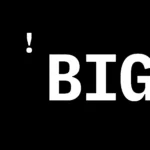Economic cycles can be as unpredictable as the weather and understanding the nuanced relationship between brand equity and macroeconomic conditions has become an indispensable facet of leadership.
Brand equity, a brand’s power derived from the goodwill and name recognition that it has earned over time, directly impacts its market share and profitability. This crucial component of a company’s valuation can dramatically sway under the influence of varying economic conditions.
Understanding the Connection Between Brand Equity and Economic Conditions
Brand equity and economic conditions are intrinsically intertwined, creating a fascinating dynamic that’s often overlooked. There’s no doubt a brand’s equity can be significantly influenced by shifts in the economic climate.
Understanding the intricate relationship between brand equity and economic conditions today is crucial for leaders. Both inflation and deflation can significantly influence brand equity in different yet impactful ways.
As leaders endure phases of inflation and deflation, they see how directly it impacts consumers’ buying power and behavior. Many will notice how this influences brand equity.
During inflation, as prices rise, the purchasing power of money decreases. Consumers may respond to this by “tightening their purse strings”, becoming more price-sensitive, and may exhibit reduced brand loyalty.
This shift in consumer behavior can negatively impact brand equity as companies may struggle to maintain the perceived value of their brands amidst rising costs.
On the other hand, during deflation, when consumers expect prices to drop, and the value of money increases, consumers tend to become more selective and demanding. Their expectations from brands escalate as they perceive that their money should now buy them more.
If a brand fails to meet these elevated expectations, its equity is likely to deteriorate.
The Impacts of Inflation on Brand Equity
The intricate dynamics of inflation are often a source of economic apprehension, but its effects ripple beyond just the financial realm, directly impacting brand equity. As the costs of goods and services rise during inflation, so does the perceived value associated with certain brands.
Inflation’s impact on brand equity is immense
Inflation is notorious for its ability to stealthily infiltrate an economy, sapping the vitality of consumer and organizational purchasing power. This erosion is not superficial; it strikes hard at the heart of brand equity—trust and loyalty.
Brand equity, in the throes of inflation, faces a headwind that not only dictates change but commands creativity.
The pervasive beast of inflation doesn’t merely nip at the heels of economies; it sinks its teeth deep into the perceived value of brands, often with debilitating effects.
Organizations and their leaders face a stern choice: surrender that hard-earned brand equity at the whim of macroeconomic volatility, or gird themselves with innovation in customer retention and value propositions.
Agile responses to inflation
As inflation nudges the cost of doing business upward, maintaining—or, dare we say, enhancing—brand equity requires a blend of judicious foresight and nimble action.
In the grips of inflation, consumers and decisionmakers become value detectives, their acumen for spotting the genuine article honed by necessity. For many organizations, maintaining loyalty in these times can be challenging.
Leaders must ensure that their brand’s promise aligns with an unshakable core of value—whether through superior product quality, exceptional service, or a unique experience that transcends price tags. It’s about making your brand the needle in the haystack that is worth the search.
By offering products that resonate deeply with consumer needs or by implementing loyalty programs that do more than lip service, some companies have sustained or even enhanced their brand equity amid inflationary pressures.
Be it in product development, streamlining services, or discovering cost efficiencies through technology, leaders can counteract cost increments with advancements that either cut costs or magnify appeal. Keeping one step ahead of inflation’s encroachment requires an innovation mindset that treats each extra dollar in cost as a reason to rethink and redefine operational effectiveness.
In times when every penny pinches, clarity is king. Leaders must articulate not only the ‘what’ of price changes but also the ‘why’. This level of transparency builds trust—a currency that holds its value even as market conditions fluctuate.
Leaders must sharpen their arsenal with both wit and wisdom to embrace these economic conditions not as an onslaught, but as an opportunity to reinforce the resilience and relevance of their brand’s equity.
The Impacts of Deflation on Brand Equity
As dollar bills turn timid in the face of rising prices, brand equity often feels the squeeze. This covert agent of change impacts brand equity in multifaceted and nuanced ways.
Deflation, an economic condition characterized by a general decline in prices, can be as perplexing as it is rare. Its impact on brand equity is a complex tale of consumer psychology and organizational strategy.
When deflation grips an economy, the initial reaction from many might be to celebrate; after all, who doesn’t enjoy a discount?
The purchasing power of currency increases, and consumers find that they can buy more for less. But the plot thickens: with money worth more today than tomorrow, consumers often delay their purchases in anticipation of even lower prices. This waiting game can put companies in a precarious position.
In a deflationary period, consumers and decision makers know they can get more for their money.
Here lies the insidious impact of deflation on brand equity: the rising tide of consumer expectations that demands more for less.
Those organizations unable to innovate or assert their value proposition may find themselves trapped in a whirlpool of discounting.
When facing these deflationary pressures, maintaining brand equity can challenge leaders, improving or building more seems impossible.
Agile responses to deflation
In the eerie quiet that often accompanies deflationary periods, it is the agile and silent response of leaders that will chart the course for sustained brand equity.
Brands that maintain their pricing while bolstering value propositions can emerge with enhanced equity. This is the litmus test for brand resilience: withstanding the pressure to devalue offerings and instead doubling down on what makes them unique.
An appropriate agile response might involve a tightened focus on exceptional customer service or adjustments in product offerings to include more high-value features at the current pricing.
In navigating through the murky waters of deflation, leaders must double down on maintaining quality and fostering innovation to perpetuate brand desirability. Cost management becomes imperative, not by trimming essential elements that define the brand’s identity but through strategic recalibration of operations and product offerings.
Innovation in product design, marketing strategies, and customer service can help a brand stay relevant.
Leaders must scrutinize their cost structures and supply chains for efficiency gains—savings that can be passed on to customers or reinvested in the very innovation and experience enhancements already discussed.
By balancing price with value and keeping a close eye on consumer expectations, brands can turn a challenging economic narrative into a triumphant tale of strategic prowess and staying power.
Leaders must be proactive, while staying reactive
Proactivity in leadership entails anticipating the impact of deflation before it penetrates the market. It means forecasting potential scenarios and equipping the brand with a strategic plan that can be deployed when early signs of deflation appear.
A proactive stance equips companies with an operational readiness that can alleviate the pressures of sudden market shifts. Meanwhile, staying reactive—or perhaps more aptly, responsive—is an indispensable trait.
Reactivity here should not be mistaken for a knee-jerk reaction; rather, it is a calculated and swift adaptation to the intricacies of evolving circumstances. It requires a vigilant monitoring of the market pulse.
The symbiosis of proactive and reactive strategies creates a robust framework for navigating market turbulence, be it inflation or deflation, be prepared for uncertain terrain.
While proactive strategies allow leaders to set long-term innovation objectives, reactive capabilities ensure that those innovations can be adjusted or redirected based on real-time feedback and market indicators. This synergy between foresight and feedback becomes a potent force, empowering brands to retain relevance and sustain their equity through all economic weathers.
Staying informed, nimble, and decisive are the watchwords for the leadership lexicon in times of inflation and deflation. By mastering both aspects of being proactive and reactive, leaders not only weather storms, but can chart new courses toward innovation and growth that enhance and solidify brand equity in the consciousness of decisionmakers or consumers and the marketplace at large.
Next steps in your organization
By anticipating change before it occurs and responding adeptly when it does, organizations can preserve and even grow their brand equity no matter what economic climate they encounter. Equipping your enterprise with these guidelines means priming it for robust performance.
To maintain or grow brand equity amidst challenging economic conditions requires relentless focus on innovation, adaptive strategies, quality consistency, efficient management of resources, trustworthy communication, and insightful data integration.
By employing a balanced methodology between proactive planning and agile responsiveness, combined with an ability to scale these actions across the enterprise rapidly, an organization can not only safeguard but potentially enhance its brand equity even while tackling some of the most turbulent economic periods. These initiatives should be thought of as continuous efforts rather than one-time solutions; a commitment to perpetual evolution in line with ever-changing economic tides.
Ensure your organization is prepared to navigate the economic shifts impacting brand equity.


